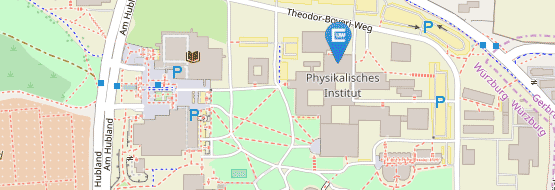C05
Topological states in materials with highly entangled spin, orbital and charge degrees of freedom
Summary
The main goal of C05 is to define and explore the physics of a new family of quantum spin Hall insu- lators: triangular monolayers with d-orbitals. Building on our previous works focused on the p-shell, we plan to investigate real-space obstructed Wannier representations, connected to the existence of electronic bulk multipoles and to higher-order topology. Via first principles calculations of orbital angular momentum and (spin-) Berry curvature we are going to access the bulk topology of trian- gular monolayers and other classes of quantum materials with d-electrons, such as transition metal dichalcogenides and the new V-based kagome metals. Since the first funding period C05 has emerged as a strongly cross-linked project bridging exper- imental and theory activities of the SFB 1170, a trait that has further strengthened during the past four years. This distinctive feature was crucial to arrive at the main achievement of C05 in the sec- ond funding period: the design and realization of a new quantum material, indenene. As reported, a triangular monolayer of indium grown on the SiC substrate realizes a quantum spin Hall insulator (QSHI) with a gap at the valley momenta of the order of 100 meV. Even though this is smaller than bismuthene, the other QSHI discovered in the first funding period, indenene of- fers significant advantages for transport as well as for potential applications as the indium atoms match in a particularly simple way with the substrate, binding directly to the uppermost silicon atoms (1×1 reconstruction). Flake sizes of the order of the micrometer are hence in reach, with foreseeable advantanges for edge transport and quantum device fabrication. Our project will open new possibilities both in terms of symmetry-breaking stabilized topology and electron-electron correlation effects. In the study of material design for new monolayers with d-electrons, which will be further pursued in close cooperation with A08, A10 and A06. Our previ- ous experience has indeed demonstrated that its interplay with the structural symmetry breaking is central to the physics of triangular monolayers and, in general, for correlated electrons in confined geometries, as those considered in our cooperation with C08. We are going to study new synergies between inversion symmetry breaking, orbital angular momentum polarization, orbital mag- netization and (spin-) Berry curvature, i.e., the fundamental ingredients for the orbital-driven Rashba effect, for transport and Berriology of Weyl points in non-centrosymmetric materials as well as for the topological aspects in trigonal monolayers including real-space obstruction and sublattice polarization. On these topics we are going to include A01, A02 and A07 in the experimental partner projects of C05. Berry curvature-related orbital magnetization is a central motif also in a new class of materials, namely the vanadium-based Kagome superconductorscharacterized by highly entangled degrees of freedom forming flat bands, van Hove singularities and symmetry-protected crossings, blended with sizeable electronic correlations. Kagome metals, probably the first compounds in which the topologically interesting physics involves exclusively the d-shell as a whole, raise a number of interesting questions and constitute one further important objective that C05 is going to share with B06 and B07 in the third funding period.


